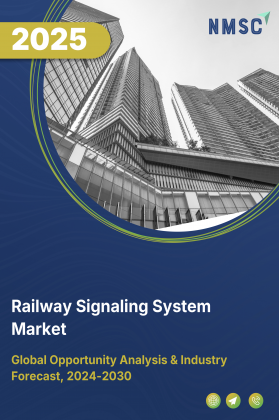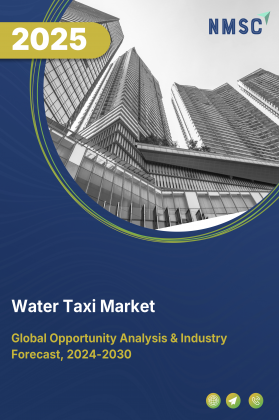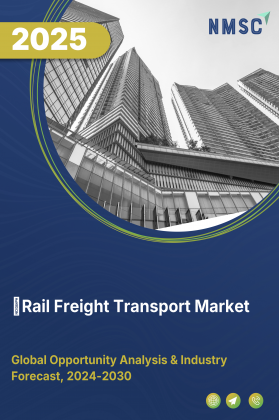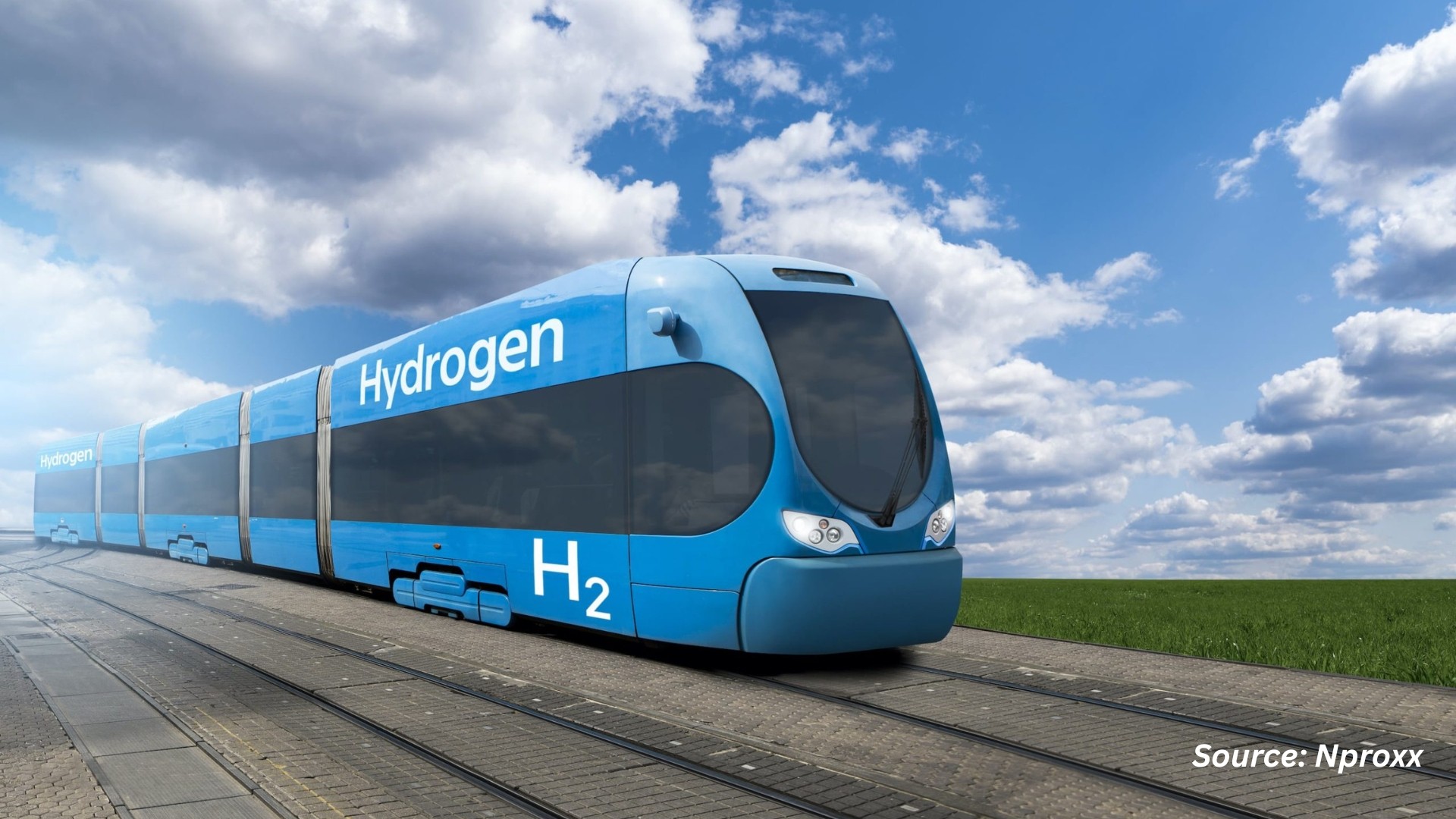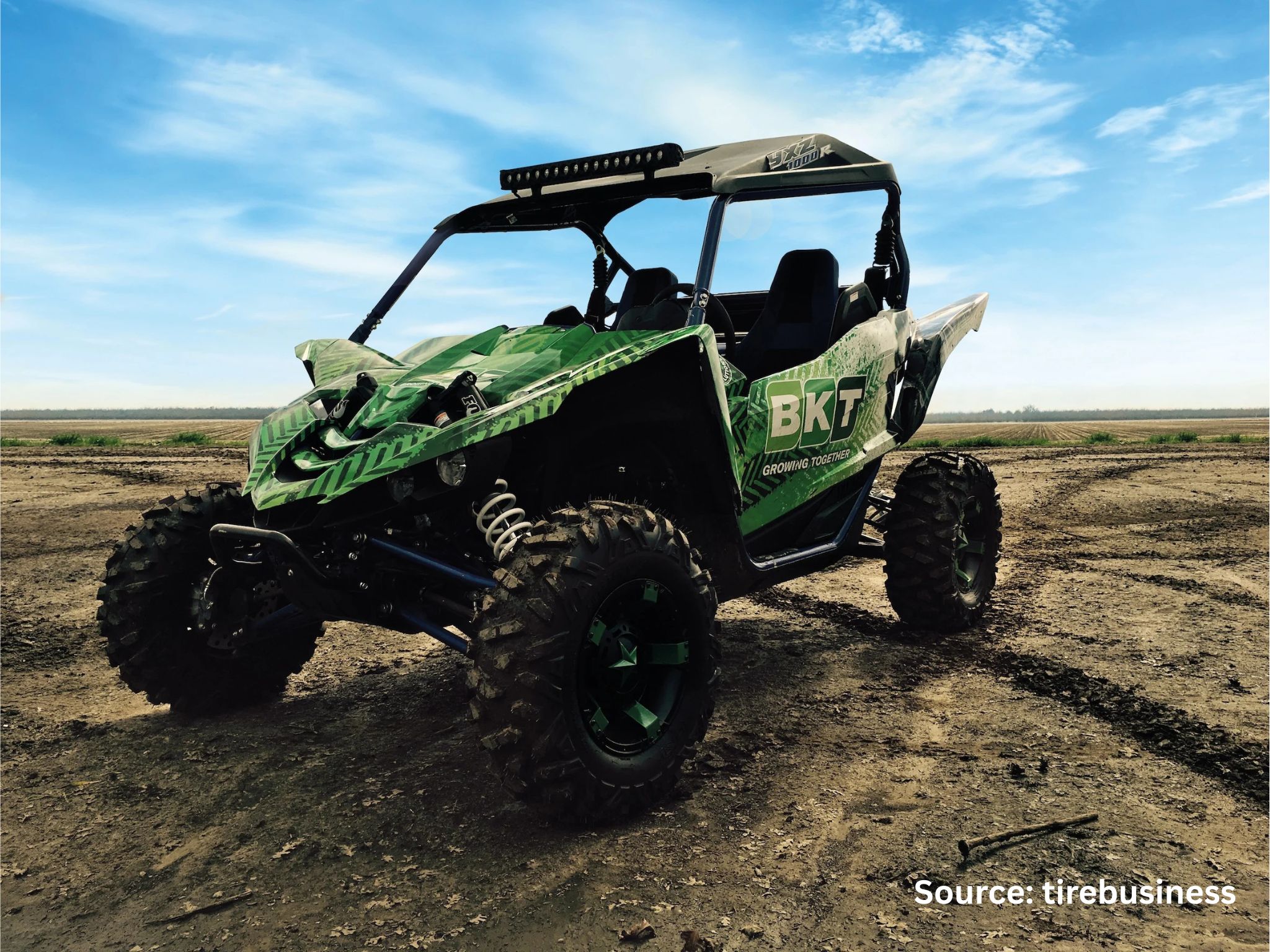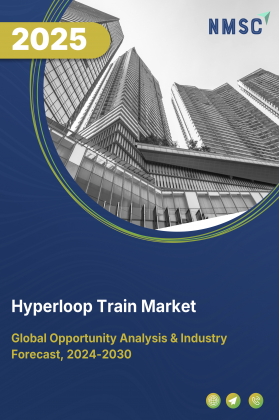
Hyperloop Technology Market by Component (Capsule (Cargo Capsule, Passenger Capsule), Control & Signalling Systems, Guideway, Propulsion System, Station), by Carriage Type (Passenger, Freight (Standard Freight, Refrigerated Freight, Specialised Cargo), Mixed Use Carriage), by Speed (Less Than 700 kmph, More Than 700 kmph), and by End User (Governments, Transit Authorities, Logistics & Freight Operators, Others) – Forecast, 2025–2030.
Industry Overview
The global Hyperloop Train Market size was valued at USD 2.92 billion in 2024 and is predicted to reach USD 4.14 billion by the end of 2025. The industry is predicted to reach USD 23.82 billion by 2030 with a CAGR of 41.88% from 2025-2030.
The market is gaining traction globally, fuelled by rapid urbanization, supportive government initiatives, and growing demand for high-speed, sustainable transport. Major infrastructure investments and smart city projects are reinforcing the need for advanced mobility solutions, while technological innovations, such as magnetic levitation and AI integration, are enhancing system efficiency and scalability.
Additionally, strong private sector involvement and public-private partnerships are accelerating research, development, and pilot testing. However, the market faces challenges from high development costs and complex regulatory hurdles, which delay commercial adoption. Despite these barriers, the evolution of modular hyperloop systems and advancements in intelligent transport technology present significant opportunities for long-term growth and global deployment.
Growing Urbanization and Government Initiatives Fuel Market Growth
The rapid rise in urbanization and supportive government initiatives are key drivers of the hyperloop train market growth. As urban populations grow, the demand for faster and more efficient transportation systems increases, particularly in densely populated regions like India and Europe.
For instance, India is building the world’s longest hyperloop test track in Chennai to advance high-speed transport. The project targets speeds over 1,100 km/h and is backed by Indian Railways and IIT Madras. TuTr Hyperloop and IIT Madras are leading the development, aiming to position India at the forefront of hyperloop innovation.
Technological Advancements and Private Sector Investments Boost the Market
Technological innovations and increasing private sector investments are significantly boosting the hyperloop train market demand. Companies globally have been trying to alter existing transportation systems to maximize public transport benefits, especially in the sector of high-speed (HS) ground transportation.
The latest invention of such is Elon Musk's ultra-high-speed rail (UHSR), the hyperloop. This technology enables a rail service to operate at a potential speed of 1,200 km/h. Hyperloop's ambitious speed goal has the potential to result in time-space shrinkage, which would then make distant cities more accessible with greatly reduced travel times.
Digital marketing and e-commerce enhance visibility through targeted campaigns and influencer partnerships, appealing to tech-savvy consumers. This synergy of technological progress is driving demand for hyperloop systems as a futuristic transport option.
Expanding Construction of Transportation Infrastructure Propels Market Expansion
The expanding construction of transportation infrastructure and connectivity projects is fuelling the hyperloop train market expansion. Hyperloop systems are designed to link major economic hubs, such as Delhi-Mumbai and Chennai-Bengaluru, cutting travel times to under an hour across India. This aligns with global smart city trends.
According to the IBEF, the Indian government’s Smart Cities Mission operates as a Centrally Sponsored Scheme, with the central government providing financial support of USD 5.76 billion over 5 years, supplemented by equal contributions from the State/Urban Local Bodies (ULBs) and additional resources from various sources, including private sector participation through Public Private Partnerships. This construction boom, supported by government policies, is creating diverse applications for hyperloop trains in urban and intercity settings.
High Costs and Stringent Regulations Disrupt Market Growth Trends
The market faces notable restraints due to high development and operational costs, coupled with complex regulatory frameworks. Building vacuum tube systems and securing safety certifications demand multi-billion-dollar investments, as evidenced by India’s proposed corridors.
Additionally, regulatory delays and public scepticism highlighted by the U.S. Federal Railroad Administration further impede momentum. Overcoming these hurdles through cost-efficient engineering and streamlined approval processes will be critical for ensuring long-term market viability.
Modular Design and AI Integration in the Hyperloop Train Creates Lucrative Market Opportunities
A major market opportunity in the hyperloop train sector lies in developing scalable, energy-efficient, and cost-effective systems for long-distance, high-speed travel. Innovations such as magnetic levitation, advanced vacuum tube infrastructure, and AI-powered safety and traffic control are rapidly advancing the commercial viability of hyperloop networks.
To enhance scalability and reduce costs, companies are increasingly adopting modular and prefabricated designs. This joint venture highlights the industry's shift toward global sustainability goals and infrastructure innovation. As the demand for sustainable, high-speed transportation grows, companies investing in intelligent integration and localized deployment are poised to capture new market segments and strengthen their global presence.
Market Segmentation and Scope of the Study
The hyperloop train market report is segmented based on component, carriage type, speed, end user, and region. Based on component, the market is divided into capsule, control & signalling systems, guideway, propulsion system, and station. Capsule is further segmented into cargo capsule and passenger capsule. Based on carriage type, the market is segmented into passenger, freight, and mixed-use carriage. Freight is further segmented into standard freight, refrigerated freight, and specialised cargo. Based on speed, the market is categorized into less than 700 kmph and more than 700 kmph. Based on end user, the market is segmented into governments & national agencies, regional & municipal transit authorities, logistics & freight operators, and others. Regional breakdown and analysis of each of the aforesaid segments includes regions comprising North America, Europe, Asia-Pacific, and Rest of the World (RoW).
Geographical Analysis
North America is spearheading the hyperloop train market share, anchored by TransPod’s Calgary–Edmonton corridor. An MOU signed in August 2020 set the stage for a pilot guideway, with construction slated for 2024–2028 and full line build out beginning in 2028 after securing US $550 million in financing. This strong public–private partnership underscores the region’s commitment to bringing vacuum tube transport into commercial reality.
Europe is showcasing technological leadership in hyperloop innovation. In 2024, Hardt Hyperloop introduced lane switching technology enabling pods to change tracks mid route and in 2025 secured European Commission funding for cross border tests between the Netherlands and Germany. Such advances are critical to establishing a seamless, non stop network across multiple countries.
Asia Pacific has emerged as the fastest growing market, driven by rising demand for modern, high speed infrastructure. Projects backed by TuTr Hyperloop (IIT Madras) and Swisspod began in March 2024 with a feasibility study in India, targeting cost effective cargo systems and localized component sourcing. The region also hosted the completion of Asia’s longest 410 m test track in December 2024, signaling accelerating R&D efforts.
The market is emerging in the Rest of the World (RoW) regions, including Latin America, the Middle East, and Africa. While growth depends on economic and tech access, increasing urbanization and trends like Brazil’s booming e-commerce sector point to rising opportunities for scalable, cost-effective hyperloop solutions. This can be experienced by the instance that Hyperloop Transportation Technologies (HyperloopTT) has completed the world’s first HyperPort feasibility study in Brazil, in collaboration with EGA Group and LabTrans at the Federal University of Santa Catarina (UFSC).
Strategic Innovations Adopted by Key Players
Key players in the hyperloop train industry, including established companies and university startups, are strategically focusing on technological innovation, R&D collaboration, and partnerships to position themselves for future market dominance. Although the hyperloop market is still in its nascent stages, not yet fully commercialized, key players are accelerating efforts to unlock its vast growth potential.
Recent developments include successful high-speed trials, infrastructure advancements, and the establishment of R&D facilities, particularly at leading universities, which are pushing the boundaries of what is technologically possible, such as:
-
In July 2024, China Aerospace Science and Industry Corporation (CASIC) successfully conducted a full-scale test of its ultra high speed maglev “flying train” in a 2 kilometer low vacuum tube in Yanggao, Datong, Shanxi province. Achieving speeds surpassing 1,000 km/h, this test surpasses the previous record of 623 km/h and marks a major milestone in the project aimed at revolutionizing inter-city travel.
-
Hyperloop Transportation Technologies (HTT)’s joint venture in January 2024 with Webuild and Leonardo to develop the world’s first commercial hyperloop system in Italy, indicate efforts to broaden appeal through strategic alliances.
-
Hardt Hyperloop, which in July 2024 secured USD 12 million to complete the European Hyperloop Center, a 420-meter test facility focused on sustainable high-speed travel. Additionally, expanding into niche markets like freight transport, where hyperloop systems enhance logistics efficiency, presents significant growth potential, especially with global emphasis on reducing carbon emissions in transportation.
Key Benefits
-
The report provides quantitative analysis and estimations of the industry from 2025 to 2030, which assists in identifying the prevailing market opportunities.
-
The study comprises a deep dive analysis of the current and future hyperloop train market trends to depict prevalent investment pockets in the sector.
-
Information related to key drivers, restraints, and opportunities and their impact on the market is provided in the report.
-
Competitive analysis of the players, along with their market share is provided in the report.
-
SWOT analysis and Porters Five Forces model is elaborated in the study.
-
Value chain analysis in the market study provides a clear picture of roles of stakeholders.
Hyperloop Train Market Key Segments
By Component
-
Capsule
-
Passenger Capsules
-
Cargo Capsule
-
-
Control & Signalling System
-
Guideway
-
Propulsion System
-
Station
By Carriage Type
-
Passenger
-
Freight
-
Standard
-
Refrigerated Freight
-
Specialised Cargo
-
-
Mixed-Use Carriage
By Speed
-
Less Than 700 kmph
-
More Than 700 kmph
By End-User
-
Governments & National Agencies
-
Regional & Municipal Transit Authorities
-
Logistics & Freight Operators
-
Others
By Region
-
North America
-
The U.S.
-
Canada
-
Mexico
-
-
Europe
-
The UK
-
Germany
-
France
-
Italy
-
Spain
-
Denmark
-
Netherlands
-
Finland
-
Sweden
-
Norway
-
Russia
-
Rest of Europe
-
-
Asia Pacific
-
China
-
Japan
-
India
-
South Korea
-
Australia
-
Indonesia
-
Singapore
-
Taiwan
-
Thailand
-
Rest of Asia Pacific
-
-
RoW
-
Latin America
-
Middle East
-
Africa
-
Key Players
-
Hyperloop Transportation Technologies (HyperloopTT)
-
Hardt Hyperloop
-
Swisspod Technologies
-
Dinclix GroundWorks
-
Quintrans Hyperloop
-
TuTr Hyperloop
-
Delft Hyperloop
-
STM Loop International
-
Neoways Technologies GmbH
-
TUM Hyperloop
-
Avishkar Hyperloop
-
Hyperloop UPV
REPORT SCOPE AND SEGMENTATION:
|
Parameters |
Details |
|
Market Size in 2025 |
USD 4.14 Billion |
|
Revenue Forecast in 2030 |
USD 23.82 Billion |
|
Growth Rate |
CAGR of 41.88% from 2025 to 2030 |
|
Analysis Period |
2024–2030 |
|
Base Year Considered |
2024 |
|
Forecast Period |
2025–2030 |
|
Market Size Estimation |
Billion (USD) |
|
Growth Factors |
|
|
Countries Covered |
28 |
|
Companies Profiled |
10 |
|
Market Share |
Available for 10 companies |
|
Customization Scope |
Free customization (equivalent up to 80 working hours of analysts) after purchase. Addition or alteration to country, regional, and segment scope. |
|
Pricing and Purchase Options |
Avail customized purchase options to meet your exact research needs. |

















 Speak to Our Analyst
Speak to Our Analyst



